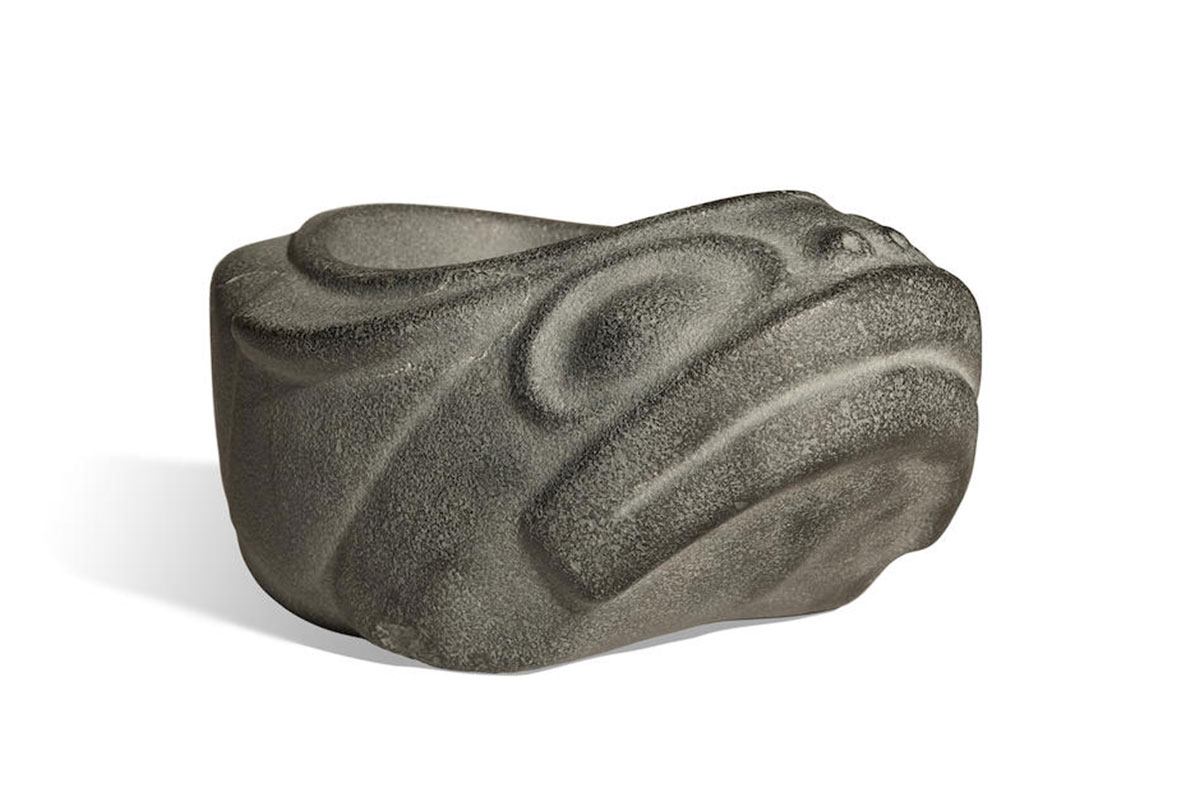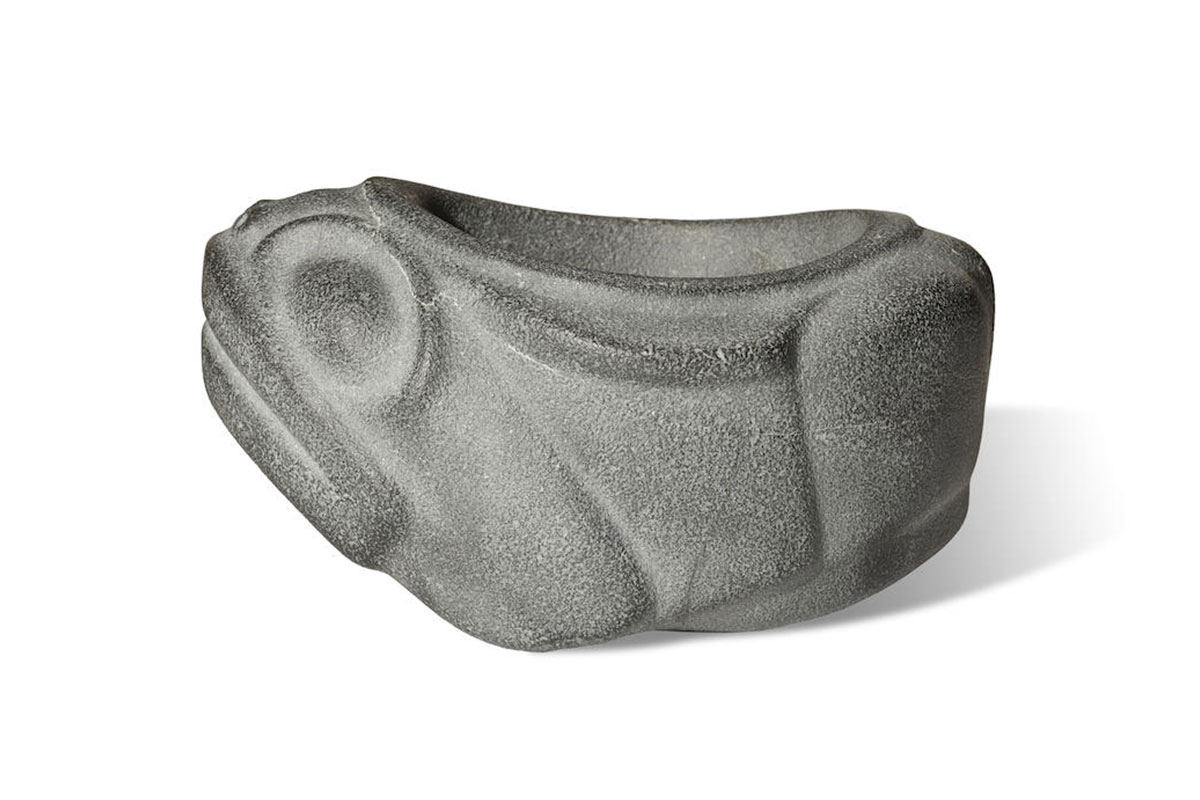Frog Effigy Mortar
Haida Gwaii, British Columbia
late 18th/early 19th century
basalt
height: 5"
width: 9 ¾"
length: 7 ½"
Inventory # N4435
Sold
acquired by the National Gallery of Canada, Ottawa, ON
Provenance
Acquired by an Englishman residing in Victoria, British Columbia, between 1920-1940
by descent through the family
Related Examples
McCord Museum, McGill University, Montreal, No. 1205a - See: Duff, Wilson. Images Stone B.C: Thirty Centuries of Northwest Coast Indian Sculpture. Seattle: University of Washington Press, 1975, pg. 144, pl. 127 - for a Haida tobacco mortar collected in the village of Kiutsa in 1878 by the Canadian geologist and surveyor George Mercer Dawson (1849-1901) while studying the coal deposits at Haida Gwaii (the Queen Charlotte Islands), it was one of at least three mortars acquired by Dawson, and displays striking similarities of style with this mortar, particularly in the execution of the facial features of the frog and the visual pun of a secondary open-mouthed visage
McCord Museum, McGill University, Montreal, No. 1205b - See: ibid. pg. 140, pl. 123, for another frog effigy mortar collected by George M. Dawson in 1878
National Museum of Man, Ottawa, No. XII-B-317 - See: ibid. pg. 141, pl. 124, for a frog effigy mortar collected by I.W Powell in 1878
Tobacco chewing was practiced on the Northwest Coast long before the arrival of Europeans and the concept of smoking the herb. The Haida excelled at growing a rare species of tobacco, which was mixed with lime obtained from burned clam shells, and either tucked into one’s cheek or slowly chewed. Seeds of this plant were traded to the Tlingit and Tsimshian over time. Once it was grown and harvested, the leaves and seed pods of the plant were dried and finely crushed in stone mortars specially made for the purpose. Tobacco mortars, like the subject example, are often smallish, dense types of sculpture, the characteristics of the stone dictating the avoidance of thin or extending features. Many historical examples were evidently plain and undecorated, while what may have been a small percentage of others were masterfully shaped into ingenious zoomorphic forms, most likely representing the crest images of their original owners.
In the beautifully sculpted mortar seen above, a compactly designed oval frog image surrounds the nearly round functional cavity in a dynamic composition that depicts a frog as if it is poised to jump. The high arch of the wide-lipped mouth is a strong statement, abolishing any question of what is being represented. The bulging eyes surrounded by an ovoid-shaped ridge are the most recognizably Northwest Coast design feature on the frog, the limbs and back ridge being subtle and unembellished. Two raised nostrils with round openings lie between the eyesockets, and the rim of the bowl cavity sweeps upward fore and aft in the traditional manner of Northwest Coast wood and horn bowls.





